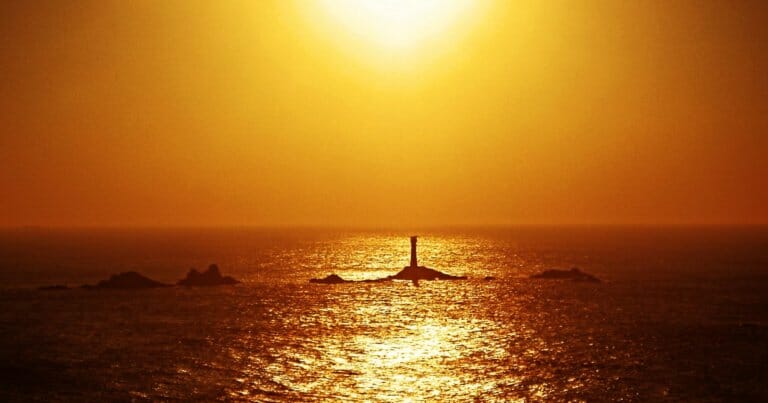Humans Have Damaged Most of the Seas, Apart From Climate Change
Humankind has already disturbed or degraded six-sevenths of the world's oceans. And that is apart from the rising acidification and other malign consequences of global warming. There’s little "true wilderness" left in the globe’s seas. (Matt Prosser / Wikimedia Commons)
There’s little "true wilderness" left in the globe’s seas. (Matt Prosser / Wikimedia Commons)
Humans huddle on a small part of the Earth’s surface, but our activity on the rest will leave our descendants only diminished oceans. Thanks to us, the wilderness of the world’s wide seas has shrunk drastically.
Earth is a waterworld: 70% of it is swept by ocean. And 87% of this waterworld has been to some degree fouled, polluted, poisoned or impoverished by the actions of one almost entirely terrestrial mammal. That is, according to a new survey, only 13% of the high seas can now be considered true wilderness.
Terrestrial life is smeared thinly. It is concentrated almost entirely in an altitude bounded by tree roots and canopy. But all the ocean is habitable, from the tidal shallows to the abyssal plain. It is home to the greatest mountain chain on the planet and to the deepest chasms, and in all it makes up 99% of the living space on Earth.
Researchers who looked at 16 different kinds of watery realm and tested them for 15 different kinds of human impact – among them commercial shipping, sediment and fertiliser run-off, and overfishing – report in the journal Current Biology that humans had left their mark almost everywhere.
“We were astonished by just how little marine wilderness remains,” said Kendall Jones, a researcher at the University of Queensland in Australia, and also of the Wildlife Conservation Society.
Huge extent
“The ocean is immense, covering over 70% of our planet, but we’ve managed to significantly impact almost all of this vast ecosystem.”
The surviving watery wilderness is estimated at an area of 54 million square kilometres. Although this is seemingly an enormous tract – think of the land areas of Russia, China, Canada, the US and Australia rolled up together – it is still less than a seventh part of the sea surface.
Most of this “untouched” ocean is concentrated in the Arctic, the Antarctic, and around the more remote Pacific islands. Hardly any marine wilderness survives along the continental coastlines.
The study comes only weeks after a survey of land conservation areas – once again, led by researchers from the University of Queensland and the Wildlife Conservation Society – found that even those stretches of mountain, savannah, forest and wetland formally recognized by governments as nature reserves or conservation zones were in many cases significantly disturbed or degraded by human intrusion.
The plight of the high seas has been disturbing marine scientists and oceanographers for some time. They have repeatedly warned that human-driven climate change is affecting ocean temperatures and compromising the health of the ecosystems on which, for instance, commercial fisheries depend.
Human actions have created “dead zones” and great tracts of toxic algal growths fed by nutrients from the land. Plastic waste has been found almost everywhere, and changes in water chemistry threaten many species at all depths.
But the Queensland study looks only at those measurable human impacts that are not connected with climate change: the implicit message is that acidification, sea level rise, and ocean temperature increase, all of them driven by profligate human combustion of fossil fuels, will ultimately affect even those areas of ocean defined as surviving wilderness.
Research of this nature is inevitably a matter of meticulous accounting: scientists comb through huge numbers of studies, and identify the data on which they can rely, and then find ways to test their hypothesis. This involved, for instance, checking the range and distribution of more than 21,000 marine species, and separately considering submarine kelp forests, coastal reefs, warm and temperate zones, the deep ocean and the polar waters.
Little protection
The researchers found that more than 8% of the wilderness was in the warm Indo-Pacific and that only 5% of the remaining marine wilderness enjoyed any formal governmental or international protection.
“Pristine wilderness areas hold massive levels of biodiversity and endemic species and are some of the last places on earth where big populations of apex predators are still found,” Kendall Jones said.
“This means the vast majority of marine wilderness could be lost at any time, as improvements in technology allow us to fish deeper and ship farther than ever before.
“Thanks to a warming climate, even some places that were once safe due to year-round ice cover can now be fished.”
Your support matters…Independent journalism is under threat and overshadowed by heavily funded mainstream media.
You can help level the playing field. Become a member.
Your tax-deductible contribution keeps us digging beneath the headlines to give you thought-provoking, investigative reporting and analysis that unearths what's really happening- without compromise.
Give today to support our courageous, independent journalists.






You need to be a supporter to comment.
There are currently no responses to this article.
Be the first to respond.